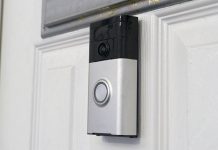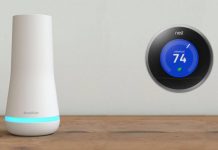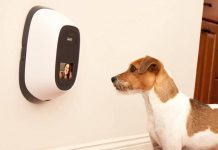UPDATED December 11, 2021 This piece has been updated to reflect the emergence of new technology


Christian Mathews Security Writer
We often get hung up on the lighting requirements of the inside of the house. We spend hours planning and hundreds of dollars in buying the best possible lighting. But when it comes to outdoors or even outside lights with motion sensors, we seldom care about giving much thought.
1Why Get Outdoor Sensor Lights?
The main reason why we believe you should be concerned about outdoor lighting has to do with safety. This is especially true during the evening and night hours from 6 PM to 6 AM or from sunset to sunrise. This is the period when there’s limited lighting available outside. So, whether you’re answering a door after sunset or looking to go out of your house, there’s always a degree of uncertainty. That’s where artificial lighting can come in handy.
With outside lights with a motion sensor, you can have a view of what the situation of your home outside is like. This will help you prepare accordingly. If you’re answering a door, you can see whether it’s your fiance, a pizza delivery guy, or someone else.
But outdoor sensor lights go a step beyond what conventional lights can do. They save you money while offering a sense of security. These lighting systems are equipped with motion sensors. Motion sensors for the yard utilize infrared (IR) rays to detect movement. When they do detect a movement, they light themselves up. So you do not have to light them up always and pay for the energy consumed.
Today’s outdoor sensor lights are programmed to suit your needs.
2Things to Consider While Buying Outdoor Sensor Lights
Power Source
For the outdoor sensor lights to function properly, they need a power source to derive the required electricity. The electricity is then fed to the bulbs, sensors, and other parts of the lighting system.
In the majority of the cases, it’s a rechargeable alkaline battery that powers the system. And there are good reasons for it. The battery is rechargeable, and you can use it for years and don’t have to worry about arranging a new cell every week or month. Secondly, the power source remains independent of your in-house lighting system. This way, it keeps functioning even when you suffer a power outage.
Li-ion batteries are also growing in popularity to power outside motion sensor lights.
Installation
The outdoor lights with motion sensors are installed at multiple places. You can hang them right outside of the house or create a separate pole to support the lights and their sensors. But ideally, you should place the lights where you’ll most likely need them. This can be right outside your main door, in the backyard, in the front yard, outside your fence. But make sure you’re not disturbing your neighbors. When installing these lights, here are a few things you need to keep in mind:
- Consider the cost of running the outdoor lights. You should decide on a budget that will determine how many bulbs you can install and the distance between them.
- Lights installed outdoors do affect wildlife. This can disorient bats or birds.
- If you’re installing floodlights, place them at least 2 meters off the ground to gain maximum range.
Effectiveness
When buying a motion detector light, you’re surely going to scrutinize its effectiveness. The effectiveness of such a light is determined by how sensitive it is to move. Most sensors can detect movement within the 50 to 80 feet range.
The effectiveness also depends on what type of motion sensor is used in the lighting system. Some of the most common ones are:
- Passive Infrared (PIR)
- Microwave
- Dual Technology Motion Sensor
- Area Reflection Motion Sensor
- Ultrasonic
If you’re concerned about the distance, then Area Reflection motion sensors are the best. They check if the person or object is within a designated area before lighting up the bulbs.
Pet Friendly?
Do you want to provide lights to your pets when you move around in the evening or nighttime? Then any regular motion sensor light system will do the job.
What if you want the opposite? You don’t want security lights to light up when your pet is around. In such cases, you should install pet immune motion sensor lights. They ignore pet movement and remain turned off. For these to work correctly, you need to consider the size and weight of the animal.
Weather Resistance & Durability
Since outdoor sensor lights are meant to be installed outdoors, they are designed to withstand extreme weather. They’re capable of withstanding the withering heat of the afternoon and the chilling cold of midnight. Most lighting systems come with at least one year of the warranty period.
Type of Bulb Used
There are different types of bulbs used in outdoor lights with motion sensors. Generally, three types are used:
PIR bulbs are equipped with PIR sensors and solar panels. So they save you the maximum amount of energy. You must install them at a place so they can receive sunlight in the daytime. Then the solar energy gets converted to electrical energy to power the bulbs in the night hours. The PIR sensors ensure the lighting system is used only when there’s a movement.
LED bulbs are the most common type of bulbs you’re going to find in outdoor lighting systems. These bulbs are not only energy efficient but offer high lumen output. Lumen is the measurement of the light’s brightness. That’s why LED motion lights are used in floodlights. Besides these benefits, LEDs have excellent thermal management capability and are environment-friendly. So the next time you shop for outdoor motion sensor lights, look for ones provided with LED bulbs.
Before LED was a thing, it was halogen bulbs that dominated the lighting system. But these are still used today because of the high brightness they offer. On the downside, halogens are comparatively expensive, less durable, and contain a toxic substance in them.
3Wrap Up
Keeping your house safe and secure during the day and night can be achieved through an array of different products and systems. Motion sensors for outdoor lights go a long way to lighting up those dark spots when someone is there when they shouldn’t. An alternative to motion sensors is light sensors for outdoor lights. Know the difference and make sure you have the right solution for your circumstances.

















































